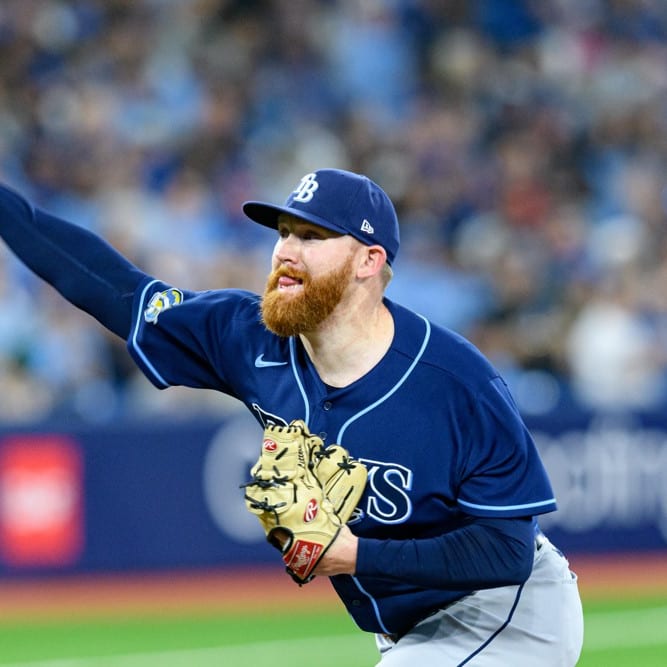This article is part of our MLB Barometer series.
It's been clear for several years now that young players are making more noticeable impacts and making them more quickly than ever. In that vein, three of the featured Risers in this week's Barometer are rookies. Of the trio, however, only Keston Hiura had much hype before the season, and neither Oscar Mercado nor Jose Urquidy were really on the radar in the vast majority of leagues. With no experience above Double-A and no immediately apparent roster spot, even Hiura wasn't much of an option during draft season, finishing with a 573.8 NFBC ADP.
Just because rookies are generally more exciting than ever doesn't necessarily make them easier to draft. Even the most heralded prospects can still struggle while adjusting to the league. On the flip side, advancements in player development have enabled lesser-known young players to quickly emerge as quality options right away. The following table compares the highest-drafted rookie at each position to the top performing rookie according to our earned auction values to demonstrate some of that uncertainty. All columns refer to the player's rank at that specific position.
| POS | Top Drafted Player | NFBC ADP Rank | Earned Value Rank | Best Performer | NFBC ADP Rank | Earned Value Rank |
|---|---|---|---|---|---|---|
| C | Danny Jansen | 8 | 43 | Carson Kelly | 30 | 12 |
| 1B | Pete Alonso | 22 | 6 |
It's been clear for several years now that young players are making more noticeable impacts and making them more quickly than ever. In that vein, three of the featured Risers in this week's Barometer are rookies. Of the trio, however, only Keston Hiura had much hype before the season, and neither Oscar Mercado nor Jose Urquidy were really on the radar in the vast majority of leagues. With no experience above Double-A and no immediately apparent roster spot, even Hiura wasn't much of an option during draft season, finishing with a 573.8 NFBC ADP.
Just because rookies are generally more exciting than ever doesn't necessarily make them easier to draft. Even the most heralded prospects can still struggle while adjusting to the league. On the flip side, advancements in player development have enabled lesser-known young players to quickly emerge as quality options right away. The following table compares the highest-drafted rookie at each position to the top performing rookie according to our earned auction values to demonstrate some of that uncertainty. All columns refer to the player's rank at that specific position.
| POS | Top Drafted Player | NFBC ADP Rank | Earned Value Rank | Best Performer | NFBC ADP Rank | Earned Value Rank |
|---|---|---|---|---|---|---|
| C | Danny Jansen | 8 | 43 | Carson Kelly | 30 | 12 |
| 1B | Pete Alonso | 22 | 6 | Pete Alonso | 22 | 6 |
| 2B | Garrett Hampson | 22 | 74 | Brandon Lowe | 44 | 17 |
| 3B | Vladimir Guerrero Jr. | 8 | 36 | Michael Chavis | 78 | 24 |
| SS | Garrett Hampson | 21 | 59 | Fernando Tatis Jr. | 31 | 6 |
| OF | Victor Robles | 26 | 50 | Bryan Reynolds | N/A | 36 |
| P | Yusei Kikuchi | 62 | 518 | Mike Soroka | 161 | 19 |
Only one of the top drafted rookies (Alonso) has been the best rookie at his position. Alonso's success demonstrates the upside that can be found by gambling on rookies, and Robles has been adequate if not quite up to expectations, but the major misses outweigh the hits. Kikuchi (not a traditional rookie), Jansen and Hampson have been complete busts, while Guerrero isn't anywhere close to what he was supposed to be.
Of the rookies who have been the top performers at their respective positions, only Tatis had a ton of hype, though there was at least some interest in a few of the names on the list such as Lowe and Soroka. Reynolds didn't even show up as a player to draft prior to the season. The lesson from this list seems to be not to ignore rookies entirely but also not to approach them with all that much confidence prior to their debuts. Don't be afraid, though, to jump on a rookie on waivers who started his season hot like Lowe or Reynolds, as the current player development environment seems conducive to breakouts from players who didn't receive much hype prior to the season.
RISERS
 Mookie Betts, OF, Red Sox: Betts' season started off as largely a disappointment considering that he was taken as the second player off the board during draft season. In the context of his 1.079 OPS from last season, even his .921 OPS in March and April was unimpressive, but his .807 OPS in May and his .772 in June were particularly far from expectations. Since the calendar flipped to July, however, Betts has been exactly as advertised, hitting .366/.432/.656. His quality of contact has improved considerably, backing up those significantly improved numbers. He's managed a 48.8 percent hard-hit rate (according to FanGraphs) after posting a 40.2 percent mark through the end of June. A similar story can be told about his line-drive rate, which has jumped from 18.0 percent to 32.1 percent in July, and his percentage of balls hit up the middle, which has increased from 30.1 percent to 39.3 percent. Betts looks to be back to MVP form and has a good shot to live up to his draft price the rest of the way.
Mookie Betts, OF, Red Sox: Betts' season started off as largely a disappointment considering that he was taken as the second player off the board during draft season. In the context of his 1.079 OPS from last season, even his .921 OPS in March and April was unimpressive, but his .807 OPS in May and his .772 in June were particularly far from expectations. Since the calendar flipped to July, however, Betts has been exactly as advertised, hitting .366/.432/.656. His quality of contact has improved considerably, backing up those significantly improved numbers. He's managed a 48.8 percent hard-hit rate (according to FanGraphs) after posting a 40.2 percent mark through the end of June. A similar story can be told about his line-drive rate, which has jumped from 18.0 percent to 32.1 percent in July, and his percentage of balls hit up the middle, which has increased from 30.1 percent to 39.3 percent. Betts looks to be back to MVP form and has a good shot to live up to his draft price the rest of the way.
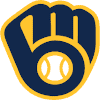 Keston Hiura, 2B, Brewers: Hiura made a strong first impression from mid-May to early June, hitting .281/.333/.531 in 17 games. Despite that early success, he was optioned to make room for Travis Shaw's return from a wrist injury, but he was back in the big leagues in late June after Shaw continued to struggle. In the 26 games since his return, Hiura has reached another level, hitting .354/.426/.677 with six homers, bringing his season line up to .325/.390/.619. His 31.1 percent strikeout rate is something of a concern, but there's a good chance that number trends downward in the near future, as he was never a particularly high strikeout guy in the minors. His .436 BABIP also suggests that he's in line for a fair amount of regression, though a fairly high BABIP is to be expected from a hitter whose hard-hit rate is 52.5 percent, fourth among all hitters with at least 100 batted balls. Hiura can fall a long way and still be one of the better options at second base down the stretch now that his starting role is seemingly fully secured.
Keston Hiura, 2B, Brewers: Hiura made a strong first impression from mid-May to early June, hitting .281/.333/.531 in 17 games. Despite that early success, he was optioned to make room for Travis Shaw's return from a wrist injury, but he was back in the big leagues in late June after Shaw continued to struggle. In the 26 games since his return, Hiura has reached another level, hitting .354/.426/.677 with six homers, bringing his season line up to .325/.390/.619. His 31.1 percent strikeout rate is something of a concern, but there's a good chance that number trends downward in the near future, as he was never a particularly high strikeout guy in the minors. His .436 BABIP also suggests that he's in line for a fair amount of regression, though a fairly high BABIP is to be expected from a hitter whose hard-hit rate is 52.5 percent, fourth among all hitters with at least 100 batted balls. Hiura can fall a long way and still be one of the better options at second base down the stretch now that his starting role is seemingly fully secured.
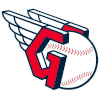 Oscar Mercado, OF, Indians: Mercado was only supposed to be a mediocre prospect when Cleveland acquired him in a prospect-for-prospect trade last season, possessing decent speed, defense and contact but not much power. His first 16 games in the big leagues fit that profile, as he managed an unimpressive .259/.328/.362. In the 44 games since, however, he's hit .307/.347/.508, and focusing on just his last 14 games, he's slashed an excellent .356/.394/.644. Like seemingly everyone else, Mercado has shown more power than expected, managing eight homers in 60 games to go with his nine steals. He's moved into an everyday role in center field, sitting just twice in Cleveland's last 43 games. A .266 expected batting average according to Statcast does suggest he's overachieved a bit, though his speed means he could continue to outperform that number, and even regressing to a league-average batting line would still make Mercado a noticeably better option than he was supposed to be heading into the season.
Oscar Mercado, OF, Indians: Mercado was only supposed to be a mediocre prospect when Cleveland acquired him in a prospect-for-prospect trade last season, possessing decent speed, defense and contact but not much power. His first 16 games in the big leagues fit that profile, as he managed an unimpressive .259/.328/.362. In the 44 games since, however, he's hit .307/.347/.508, and focusing on just his last 14 games, he's slashed an excellent .356/.394/.644. Like seemingly everyone else, Mercado has shown more power than expected, managing eight homers in 60 games to go with his nine steals. He's moved into an everyday role in center field, sitting just twice in Cleveland's last 43 games. A .266 expected batting average according to Statcast does suggest he's overachieved a bit, though his speed means he could continue to outperform that number, and even regressing to a league-average batting line would still make Mercado a noticeably better option than he was supposed to be heading into the season.
 Paul Goldschmidt, 1B, Cardinals: It's hard to get much hotter than hitting a home run in every game, which is exactly what Goldschmidt did for five straight games last week, tying a franchise consecutive-game homer streak. The veteran's hot streak really stretches back to the beginning of July, however. After managing an unimpressive .246/.336/.405 slash line through the first three months of the season, Goldschmidt has hit .289/.348/.687 since the calendar flipped. Oddly enough, his strikeout and walk rates have each trended slightly in the wrong direction in July, with the former rising from 25.6 percent to 26.1 percent and the latter falling from 11.4 percent to 8.7 percent. Equally strange is the fact that his hard-hit rate has dropped, falling to 41.7 percent in July after coming in at 49.8 percent through the end of June. He's raised his pull rate by 11.7 points and his flyball rate by 13.0 points, though, leading to the big uptick in power. It wouldn't be surprising if his batting average fell down the stretch with that new approach, but he's at least finally slugging like a first baseman again.
Paul Goldschmidt, 1B, Cardinals: It's hard to get much hotter than hitting a home run in every game, which is exactly what Goldschmidt did for five straight games last week, tying a franchise consecutive-game homer streak. The veteran's hot streak really stretches back to the beginning of July, however. After managing an unimpressive .246/.336/.405 slash line through the first three months of the season, Goldschmidt has hit .289/.348/.687 since the calendar flipped. Oddly enough, his strikeout and walk rates have each trended slightly in the wrong direction in July, with the former rising from 25.6 percent to 26.1 percent and the latter falling from 11.4 percent to 8.7 percent. Equally strange is the fact that his hard-hit rate has dropped, falling to 41.7 percent in July after coming in at 49.8 percent through the end of June. He's raised his pull rate by 11.7 points and his flyball rate by 13.0 points, though, leading to the big uptick in power. It wouldn't be surprising if his batting average fell down the stretch with that new approach, but he's at least finally slugging like a first baseman again.
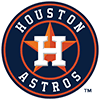 Jose Urquidy, SP, Astros: Urquidy didn't enter 2019 as a particularly interesting prospect. He hadn't pitched above Double-A and owned a modest 20.5 percent strikeout rate in 46 innings at that level last season after missing all of 2017 due to Tommy John surgery. His stat line this season looks like that of an entirely different pitcher. The 24-year-old struck out 33.1 percent of batters in the high minors while walking just 4.9 percent and now owns a 28.8 percent strikeout rate and a 3.8 percent walk rate in four big-league starts. His 4.26 ERA isn't particularly impressive, but his 2.65 FIP and 2.93 xFIP suggest that number could plummet quickly in the near future. It's not always easy to fully buy into sudden breakouts such as this one, but the Astros' reputation certainly makes it easier.
Jose Urquidy, SP, Astros: Urquidy didn't enter 2019 as a particularly interesting prospect. He hadn't pitched above Double-A and owned a modest 20.5 percent strikeout rate in 46 innings at that level last season after missing all of 2017 due to Tommy John surgery. His stat line this season looks like that of an entirely different pitcher. The 24-year-old struck out 33.1 percent of batters in the high minors while walking just 4.9 percent and now owns a 28.8 percent strikeout rate and a 3.8 percent walk rate in four big-league starts. His 4.26 ERA isn't particularly impressive, but his 2.65 FIP and 2.93 xFIP suggest that number could plummet quickly in the near future. It's not always easy to fully buy into sudden breakouts such as this one, but the Astros' reputation certainly makes it easier.
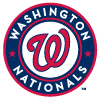 Stephen Strasburg, SP, Nationals: Strasburg has had an ERA below 3.75, a FIP below 3.65 and an xFIP below 3.30 for nine straight seasons, yet he's not often mentioned as one of the game's inner circle of elite pitchers, partially due to his lack of durability and partially due to the fact that he's been overshadowed by Max Scherzer in Washington the last five years. He can't change the Scherzer factor, but he's been quite durable this season, as he hasn't missed a single start. He's been as good as ever over the course of the year, recording a 3.26 ERA and a 29.6 percent strikeout rate. Over his last five starts, though, he's been outstanding, posting a 1.14 ERA and a 34.9 percent strikeout rate. While his injury history gives him a reputation as untrustworthy, Strasburg has been quite consistent as long as he's been healthy, so owners should be very confident in him down the stretch as long as he can avoid the injured list.
Stephen Strasburg, SP, Nationals: Strasburg has had an ERA below 3.75, a FIP below 3.65 and an xFIP below 3.30 for nine straight seasons, yet he's not often mentioned as one of the game's inner circle of elite pitchers, partially due to his lack of durability and partially due to the fact that he's been overshadowed by Max Scherzer in Washington the last five years. He can't change the Scherzer factor, but he's been quite durable this season, as he hasn't missed a single start. He's been as good as ever over the course of the year, recording a 3.26 ERA and a 29.6 percent strikeout rate. Over his last five starts, though, he's been outstanding, posting a 1.14 ERA and a 34.9 percent strikeout rate. While his injury history gives him a reputation as untrustworthy, Strasburg has been quite consistent as long as he's been healthy, so owners should be very confident in him down the stretch as long as he can avoid the injured list.
FALLERS
 Miguel Cabrera, 1B, Tigers: Cabrera might be done. Not done playing — unless he forfeits the $124 million owed to him through the end of 2023 — but done as a productive player. His .275/.337/.363 season line is good for just an 87 wRC+, even worse than the 93 wRC+ he posted when he first fell off a cliff in 2017. He's been particularly poor since the start of the second half, hitting just .104/.140/.146 in 12 games. His Statcast numbers suggest he deserves a little better, as his expected batting average sits at .266 while his expected slugging percentage comes in at .406, but he's also been the 16th-slowest player in the league, so it's hardly surprising to see him fall below those figures. Between his age and his chronic knee problems, there's little reason to believe Cabrera will bounce back any time soon, and he's unlikely to have much to offer fantasy owners the rest of the way.
Miguel Cabrera, 1B, Tigers: Cabrera might be done. Not done playing — unless he forfeits the $124 million owed to him through the end of 2023 — but done as a productive player. His .275/.337/.363 season line is good for just an 87 wRC+, even worse than the 93 wRC+ he posted when he first fell off a cliff in 2017. He's been particularly poor since the start of the second half, hitting just .104/.140/.146 in 12 games. His Statcast numbers suggest he deserves a little better, as his expected batting average sits at .266 while his expected slugging percentage comes in at .406, but he's also been the 16th-slowest player in the league, so it's hardly surprising to see him fall below those figures. Between his age and his chronic knee problems, there's little reason to believe Cabrera will bounce back any time soon, and he's unlikely to have much to offer fantasy owners the rest of the way.
 Scooter Gennett, 2B, Reds: Owners who stashed Gennett on the injured list until his return from a groin injury in late June likely aren't too pleased with his .207/.230/.241 slash line through his first 18 games of the year. The sample size is of course quite small — small enough that a two-hit game on Sunday more than doubled his season wRC+ from 9 to 19 — but the underlying numbers have been just as discouraging as the results. The second baseman has walked just once and owns a 27.9 percent strikeout rate, a large jump from last season's 19.6 percent mark. His barrel rate sits at a nice round zero percent, while his hard-hit rate is a measly 19.0 percent, leading to an expected batting average of .203. It's possible that he simply needs more time to find his rhythm, making him a decent speculative buy-low candidate if his price has dropped low enough, but given that he's already battled new groin issues once since returning from the injured list, it's not hard to envision this being simply a lost season.
Scooter Gennett, 2B, Reds: Owners who stashed Gennett on the injured list until his return from a groin injury in late June likely aren't too pleased with his .207/.230/.241 slash line through his first 18 games of the year. The sample size is of course quite small — small enough that a two-hit game on Sunday more than doubled his season wRC+ from 9 to 19 — but the underlying numbers have been just as discouraging as the results. The second baseman has walked just once and owns a 27.9 percent strikeout rate, a large jump from last season's 19.6 percent mark. His barrel rate sits at a nice round zero percent, while his hard-hit rate is a measly 19.0 percent, leading to an expected batting average of .203. It's possible that he simply needs more time to find his rhythm, making him a decent speculative buy-low candidate if his price has dropped low enough, but given that he's already battled new groin issues once since returning from the injured list, it's not hard to envision this being simply a lost season.
 Zach Eflin, SP, Phillies: Eflin raised his strikeout rate by 10 percentage points last season seemingly out of nowhere, making him an interesting sleeper for this season. His 2.83 ERA through his first 14 starts was an excellent return on investment for those who chose to buy in, though a 4.06 FIP and a 4.70 xFIP warned of imminent regression. He's done far worse than regress over his last six outings, however, recording an awful 10.46 ERA and a 13.8 percent strikeout rate, a number which wouldn't have looked out of place in his first two very uninspiring seasons in the big leagues. He hasn't lost any fastball velocity over that most recent stretch, but he rather ominously complained of a "heavy body" prior to his most recent start Saturday against the Braves, in which he allowed 10 runs while recording eight outs. The Phillies seemingly won't be sending him to the injured list or to the bullpen, as the mysterious ailment is being treated as nothing worse than the typical wear and tear of a long season, but he could seemingly benefit from some time out of the firing line.
Zach Eflin, SP, Phillies: Eflin raised his strikeout rate by 10 percentage points last season seemingly out of nowhere, making him an interesting sleeper for this season. His 2.83 ERA through his first 14 starts was an excellent return on investment for those who chose to buy in, though a 4.06 FIP and a 4.70 xFIP warned of imminent regression. He's done far worse than regress over his last six outings, however, recording an awful 10.46 ERA and a 13.8 percent strikeout rate, a number which wouldn't have looked out of place in his first two very uninspiring seasons in the big leagues. He hasn't lost any fastball velocity over that most recent stretch, but he rather ominously complained of a "heavy body" prior to his most recent start Saturday against the Braves, in which he allowed 10 runs while recording eight outs. The Phillies seemingly won't be sending him to the injured list or to the bullpen, as the mysterious ailment is being treated as nothing worse than the typical wear and tear of a long season, but he could seemingly benefit from some time out of the firing line.
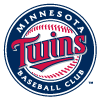 Martin Perez, SP, Twins: Perez earned some late-round sleeper buzz during spring training thanks to reports of increased velocity. His velocity was indeed up nearly two ticks early in the season, and his numbers were improved along with it, as he recorded a 2.95 ERA and a 22.9 percent strikeout rate over his first 11 outings. That strikeout rate was hardly dominant but was still dramatically improved from the 13.1 percent mark he recorded last season. His velocity hasn't fallen off much over his last 10 starts, but his performance has certainly slipped, as his ERA has jumped to 5.94 over that stretch while his strikeout rate has fallen to 17.3 percent. The lefty would appear to be at risk of losing his rotation spot if the Twins make an upgrade at the deadline, taking whatever is left of his fantasy value with it.
Martin Perez, SP, Twins: Perez earned some late-round sleeper buzz during spring training thanks to reports of increased velocity. His velocity was indeed up nearly two ticks early in the season, and his numbers were improved along with it, as he recorded a 2.95 ERA and a 22.9 percent strikeout rate over his first 11 outings. That strikeout rate was hardly dominant but was still dramatically improved from the 13.1 percent mark he recorded last season. His velocity hasn't fallen off much over his last 10 starts, but his performance has certainly slipped, as his ERA has jumped to 5.94 over that stretch while his strikeout rate has fallen to 17.3 percent. The lefty would appear to be at risk of losing his rotation spot if the Twins make an upgrade at the deadline, taking whatever is left of his fantasy value with it.








